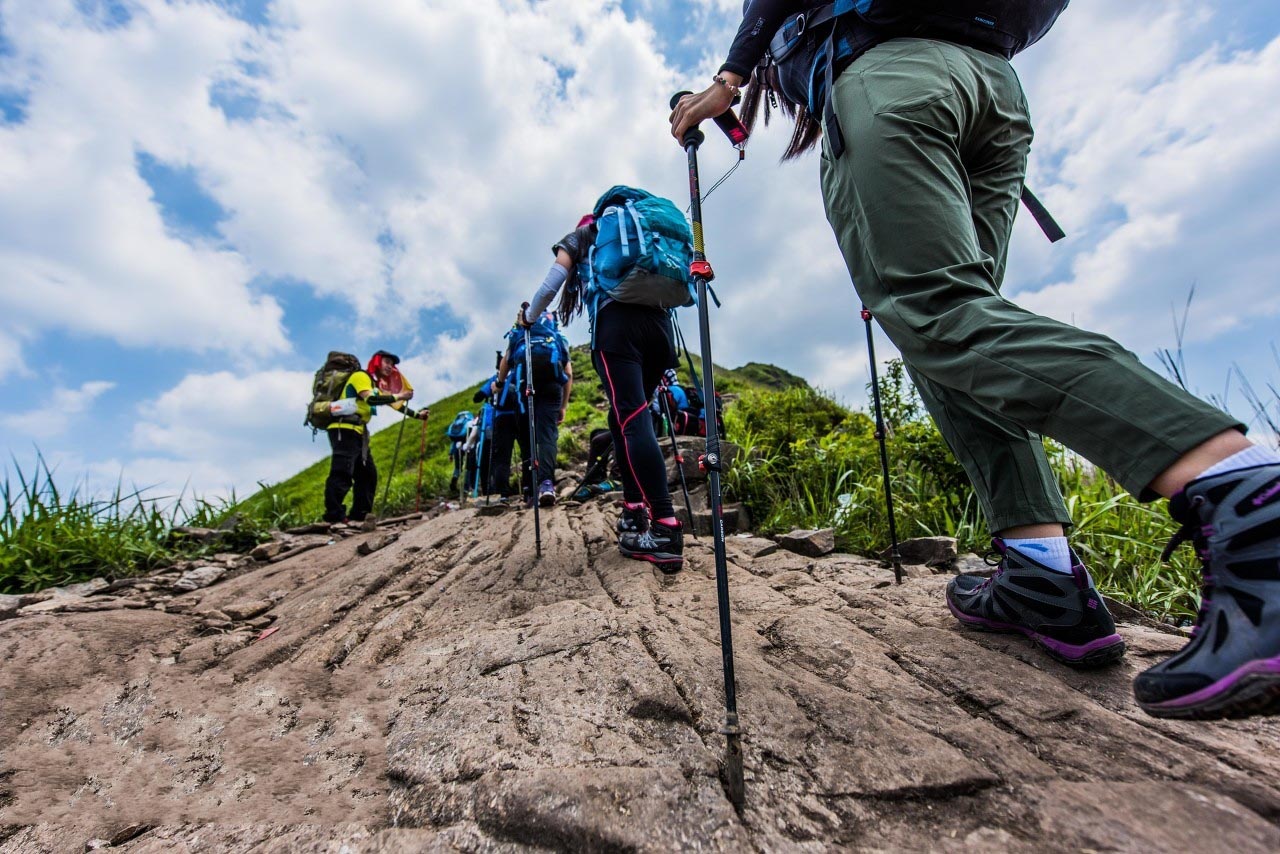How to choose the right outdoor two way radio

When participating in outdoor activities, a group of people often go out together, and due to various factors such as physical strength and experience, the team will pull longer, and the front and rear teams will sometimes cross a long distance, especially when encountering a pathfinder, Before and after the break, the front and back teams need to be able to communicate in real time and report the situation. This requires a reliable communication tool. Although smart phones are becoming more and more comprehensive at present, due to the cost and signal issues, the cost performance and effectiveness of mobile phone communication are not good. Therefore, the two way radio is still the most commonly used communication tool for outdoor sports enthusiasts.
Then, what are the problems we often encounter when using and choosing outdoor two way radio? How can we solve these problems?
Question 1: What kind of two way radio is suitable for hiking and mountain climbing?
First of all, you should have at least one national license-free two way radio (FRS 2W, PMR446 0.5w, 409MHz, 0.5W, each country is different, you can check the regulations of the corresponding national communications department for details), the communication distance in the city is about 1000 meters, The suburbs can reach two to five kilometers for entry use. Then, you can consider taking a test license and use the amateur radio and car radio.
Question 2: 0.5W/2W/4W, what is the call distance?
There are many factors that determine the communication distance. Height, antenna, and terrain all affect the communication distance more than power, so there is no one-to-one correspondence between power and call distance. The design, process, and component quality of different brands also affect the power.
Question 3: Is there any standard for two way radio communication?
In the amateur segment, there are very strict standards for communication, and special training will be given when the license is tested. In the frequency band of license free, there are the following regulations:
① It is not allowed to change the transmission frequency and increase the transmission power without authorization (including the addition of an RF power amplifier), and it is not allowed to connect an external antenna or use another transmission antenna without authorization;
②During use, it shall not cause harmful interference to various legal radio services. Once harmful interference is found, it shall be stopped immediately, and measures shall be taken to eliminate the interference before continuing to use;
③Using public intercom, its communication quality is not protected by the radio management agency, and it should bear the interference that may be caused by other normal working radio services;
④ It is prohibited to use in airports and aircrafts;
⑤ Interconnection with public telephone network, public mobile communication network and other telecommunication networks is prohibited.
Question 4: What are the consequences of using the amateur segment without a license?
Technically, using the amateur segment without sufficient knowledge will cause interference to others without knowing it;
From the legal point of view, the equipment may be confiscated and fined, with serious consequences (which may be caused without your own knowledge) is punishable by criminal law. If the national security laws are violated at the same time, it will be more serious. And in the amateur segment, if you call without a legal call sign, no one will take care of you, because the licensed ham and unlicensed communication will be revoked.
Question 5: The radio indicates that the FRS/GMRS license free band can be used directly?
FRS/GMRS is an license free band in parts of North America, but this band (462-467MHz) is zoned for other special purposes in other regions. So before using, it is best to ensure the legality of the frequency band.
Question 6: What is CTCSS? What is the use?
CTCSS (Continuous Tone Controlled Squelch System), a continuous voice control squelch system, commonly known as sub-audio, is a technology that adds frequencies below the audio frequency (67Hz-254.1Hz) to the audio signal and transmits them together. Because its frequency range is below standard audio, it is called sub-audio. When the radio demodulates the received signal at the intermediate frequency, the sub-audio signal is filtered and shaped, input to the CPU, and compared with the CTCSS frequency set by the unit to decide whether to turn on the mute.
In the amateur segment, this function is mainly used for communication with relay stations.
In outdoor activities, in addition to ensuring the frequency is the same, but also to ensure the same CTCSS, otherwise someone will find you, and you can not hear the signal of others, which is very unfavorable for rescue. This function was originally used in a noisy channel, the two parties can agree to use the same dumb audio, so that when the transmitter is talking, the intercom will automatically add an audio to the radio wave, the receiver will play the signal with the agreed audio Comes out, and shields other signals to which the audio is not attached.
The problem is that when there is no sound from your walkie-talkie, it does not mean that the channel is idle, there is no possibility that others are connecting, and you cannot hear it because of the addition of dumb audio. If you transmit at this time, it will interfere with the communication of others.
Question 7: How to use the radio to call for help in an emergency?
The amateur section should call the relay station within 300km and the maritime SOS channel in the order of distance, and then follow the standard operation. For the license free radio, the following steps should be followed:
First collect some radio batteries for backup, so that there is a backup battery after the radio battery is used up. Retrofitting is very easy, just two metal wires. The team only left two radios on, and all others were off to save battery.
Find two players with good physical strength and clear thinking, bring two radios to the highest point nearby (the higher the better, but pay attention to your own safety). One radio is listening on the channel (be sure to turn off the mute function!), and the other is calling on each channel cyclically: "SOS SOS here is XX/XXX emergency call in XX mountain here is XX/XXX emergency in XX mountain Call for help, please reply to channel x after receiving the signal. Please respond to channel x when receiving the signal." The next round of calls will be made after ten minutes after a round of calls is completed.
If you still do not reply after an hour, you can consider moving to a higher and more open position. During the movement, you should keep listening to Channel x. It is possible that the signal of 0.5W walkie-talkie can be transmitted for hundreds of kilometers on the unobstructed mountain top around.
Question 8: What should I do if the radio receives a call for help?
In order of importance:
First, ensure the safety of yourself and your team;
Second, notify the team to abandon the original plan, with the sole goal of saving people;
Third, establish contact with the outside world, forward the distress signal, and act as a communication bridge between the requester and the outside world;
Fourth, carry out rescue operations within our ability.
The third point is very important. If you have not forwarded the distress signal to the outside world, do not take any action.
Question 9: Is the VOX function useful?
The earphones are not suitable for movements with large amplitude of the limbs, it is easy to cause the earphones to fall off and you don’t know yet, so the contact is delayed. For sports that require hands free, such as road cycling and paragliding, you can use headphones, but you must develop the habit of checking the headphones at any time. If you must use a headset, it is best to let a friend who understands electronics modify the headset jack so that the headset and the speaker can sound at the same time, reducing the possibility of not hearing the call due to the headset falling off.
The VOX function can judge the strength of the surrounding sound by the radio frequency of the radio microphone, and it is automatically transmitted when you speak, without the need to press the launch button with your hand. This function is very unreliable in a noisy and multi-person environment, causing frequent launches and not knowing it. It costs electricity and disturbs others. Therefore, it is recommended not to use the VOX function for outdoor activities.







